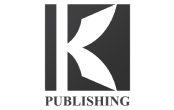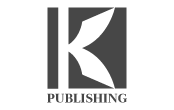It can be a daunting task to become an author, let alone an author of international repute. Once you are through selling your work locally, you start wondering if there is scope to sell your work internationally.
It is estimated that of all the books sold worldwide, 18% account for e-books. In 2020 alone, 191 million e-books were sold in the US, bringing the revenue to 1,100 million. These figures do not account for the e-books sold in other major countries like Canada and Australia.
It is only befitting that any author of any reputation should try to capture an audience in new and worldwide markets. Traditionally, the print publishers would have used their networks, shipped the book, printed out new copies, and worked with wholesalers and distributors to get a book to the other side of the world. However, with technology, this is not just made easier for them, the independent authors can also publish internationally.
Listed below are some of the channels both kinds of authors can access to get their books to sell worldwide in 2025:
Blurb
Blurb gives design freedom to the author. If you are someone who loves to be a part of everything that goes in your book, this is the platform you may want to explore. The website has Adobe InDesign and Photoshop plugins which you can use to manipulate the photos in your book. It also has the option to create with BookWright by creating a free account.
The website offers visually appealing books, like photo books, trade books, and magazines, along with e-books. However, it offers multiple options regarding paper quality and distribution. Most of the books sold on this website are print-on-demand.
You can start your book-making journey to either sell, display, gift, or keep it as a memory.
Amazon
One of the most sought-after book-selling platforms is Amazon. Amazon Author Central lets you set up your account in one location and market and sell your book across the globe. This gives your book a lot of exposure. However, you will also have a lot of competition on Amazon from books that will be looking for similar exposure.
The platform is friendly to both published authors and independent authors. It is easy to track sales through Kindle Direct Publishing for independent authors. However, for authors who have published through the traditional route, the platform offers an option to claim the books their publishers upload and market them under their name. This not only adds credibility to the books but also allows the author to redirect the audience to any other platforms they may want to link their books to.
Amazon is also the preferred choice for first-time writers of both e-books and print books. In case you decide to change the way you want to publish books along the way, the platform is very flexible.
Barnes & Noble Press
Barnes & Noble is a traditional bookstore that works with traditional distributors. To be considered for placement, an author requires a professionally produced book and a proper distributor with n ISBN. However, Barnes & Noble only operates physical stores across the US, which limits their print books to one geography. They do offer international shipping with some restrictions.
For authors to be featured on Barnes & Noble is nothing short of an accomplishment. But there are hoops to be jumped. These may be avoided if you opt for independent publishing.
The Barnes & Noble Press is an option for self-published authors to create print books and e-books. This publishing option allows authors to create professional-looking books listed on the main website. However, Barnes and Noble Press offers e-book publishing options in a few countries.
AbeBooks
If you own rare or collectible books, then AbeBooks can help you reach a wide audience. AbeBooks does not host new books or authors. But if you have a first-edition or a rare edition of an author, you can enlist it on AbeBooks for selling.
The website lists comic books, paper collectibles, maps and atlases, signed books, vintage music sheets, graphic novels, first editions, magazines, and fiction and non-fiction books. To start selling, you must pay a monthly $25 fee.
The website claims to have a worldwide audience, but shipping is left to the vendor. If you wish to offer free shipping, you will need to update the information in your shipping matrix to reflect it. The website maintains a completion rate of orders which need to be maintained in both free and standard shipping.
Google Play Books
This platform is for independent book publishers interested in publishing e-books. Google is not a publishing house and, as such, does not ship printed. However, anyone interested in printing books can download a book and print them. Most books on Google Play Books are not protected by copyright.
You don’t need an ISBN to publish with Google as an author. However, this gives you the right to publish any kind of material subject to approval from Google.
Lulu
Lulu is an independent publishing platform. Like Blurb, this platform suits authors who like to participate in the publishing process. However, Lulu is not the ideal platform to choose to distribute books. The platform offers lower royalties than other platforms. The print-on-demand service, however, is Lulu’s claim to fame, where the author can choose from different options to customize the book. The platform offers e-books, print books, magazines, comics, cookbooks, calendars, and notebooks.
Authors printing with Lulu can sell immediately on Lulu’s marketplace. But due to the low rates of royalties offered by the platform, authors are forced to price the books on the higher end to make a decent income. This makes the platform unideal for e-book publishing and distribution.
Kobo
Kobo is a Canadian company partnered with Walmart to bring millions of e-book titles to readers in 190 countries. If you are an author set on releasing your next book in e-book format, consider Kobo as the platform you can use.
The platform is independent author friendly but also houses many well-known traditionally published titles. Kobo has an approval cycle, meaning your book needs to be classified correctly and have all the metadata and relevant information the Kobo team needs.
Kobo also lists works that are in the public domain. However, it pays a lower royalty, 20%, compared to 45%- 70% for original works.
Ingram Spark
Ingram has a wide network of distribution covering bookstores, online stores, e-book retailers, libraries, and universities. The platform works with both print and e-books and offers an option to get both done.
You must create an account, upload the ISBN and cover and interior files, share a valid communication email address, and pay for the service. Ingram Spark distributes it to 40,000+ retailers.
Ingram supports fiction and non-fiction books. However, the platform is known to be non-intuitive. The platform can pose a challenge for an author who hasn’t used Ingram Sparks before. Customer service, available 24/7, is a great help when questions arise.
Bonus: Bookbaby
This ‘middleman’ taking the pressure of distributing books worldwide also offers all kinds of book editorial and design services. Once your book is created, they help you list it with major players like Barnes & Noble, Amazon, Ingram, and Baker & Taylor, among many others. You can also sell your book from Bookbaby’s own store.
FAQs
What is an ISBN?
International Standard Book Number is a 10-digit or 13-digit number that uniquely identifies books published internationally.
Do These Platforms Sell Academic Books Too?
Of the platforms mentioned above, Amazon, AbeBooks, and Google Play Books offer academic books also.
Can I Sell Used Books on These Platforms?
You can sell used books on Amazon. You can also sell used rare collectible books and AbeBooks.



